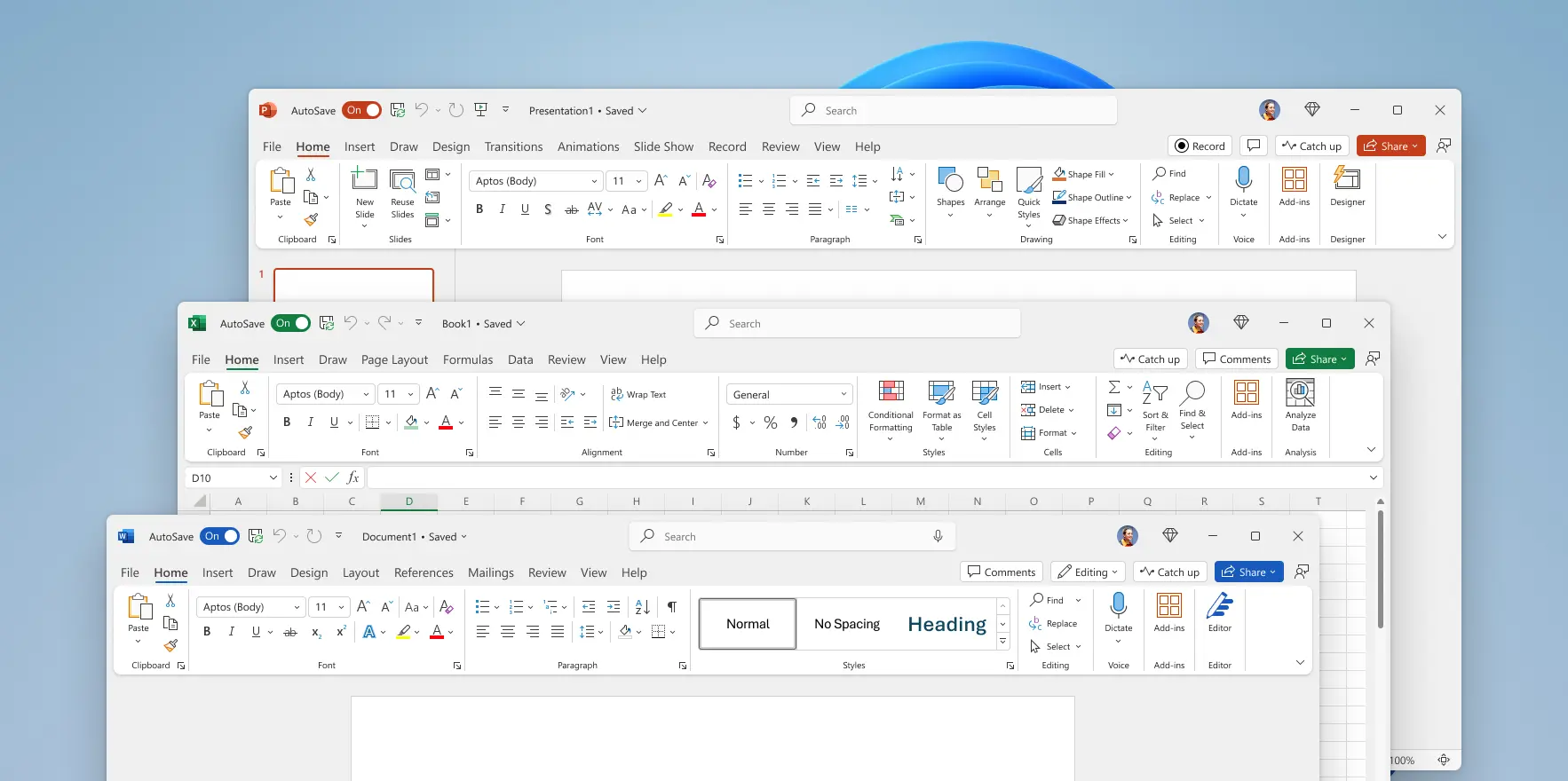Why did UI’s turn from practical to form over function?
E.g. Office 2003 vs Microsoft 365

It’s easy to remember where everything is with a toolbar and menu bar, which allows access to any option in one click and hold move.

Seriously? Big ribbon and massive padding wasting space, as well as the ribbon being clunky to use.
Why did this happen?


Yes, actually—I have a VM reserved mostly for 16-bit software.
Yes, actually—the Windows machine I’m forced to use for work restores as much of that aesthetic as practical, sometimes with the help of third-party software. My main home machine features a Linux DE whose appearance is largely the same as it was circa 2005 and whose development team is dedicated to keeping that look and feel.
Some of us do put our money where our mouths are, although I admit that isn’t universal.
It’s true that some level of padding is necessary in a UI, but the amount present in contemporary design is way too large for a system using a traditional mouse or laptop touchpad, which are capable of small, precise movements. Touchscreen-friendly design is best saved for touchscreens, but people don’t want to do the work involved to create multiple styles of UI for different hardware. I’ve never encountered anything touted as “one size fits all”, whether it be a UI or a piece of clothing, that actually does fit everyone. At best, it’s “one size fits most”, and I’m usually outside the range of “most” the designers had in mind. At worst, it’s “lowest common denominator”, and that seems to be the best description for contemporary UI design.
That be TDE or Mate?.. I can’t get rid of anxiety without using FVWM with small simple panel and very minimal look. But I am nostalgic.
TDE. Mate would work too, I suppose, but I imprinted on KDE3 early.
Do you think that’s normal? I made very clear in my comment I was referring to the vast majority of people, not a tiny majority of 80s/early 90s software enthusiasts.
As above, do you think that’s normal? I never said literally nobody, anywhere, on planet Earth does this.
Exactly. And that’s fine.
But the vast majority of people prefer UI now over what we had in the 90s.
In your opinion, sure. But that’s not the prevailing opinion. People prefer modern designs.
If people liked it, that’s what we’d have. Surely this is a simple concept?
It’s bullshit. Most people choose from among the handful of things the corporations offer them. You have to be exceptionally blockheaded to stay with an OS that no longer receives security patches, even if you prefer its interface paradigm, and if you’re not the one controlling the machine you may not even have the option. The type of retrofitting I’ve done on my work machine is just that—work—and I understand why people may not want to do it, or may not be able to do it if they’d have to fight a draconian IT department for permission.
Furthermore, most people aren’t designers or even terribly compute-literate. They don’t necessarily understand which design elements are causing them to be so inefficient when they move to a different OS version, or how to revert them in cases where that’s possible. They’re stuck with Microsoft-Apple-Google’s poor design decisions, until the same corp hands them another set of poor design decisions. The corporations don’t want to decouple the UI from the OS the way Linux and other Unixoids do and let people choose, because the shiny new UIs are an advertising opportunity and impress certain types of reviewers.
I never said using an OS from the 90s/early 2000s, I said theming current OSes as if they are.
But tbh, most people are that block-headed with tech (as you alluded to later in your comment). There will be plenty of people still on Win10 when support ends.
Ah someone who never had to deal with handicap or accessibility issues who think since he can do it no one else needs it.
Do you complain about ramps because staircase are just fine since legs can easily climb them too?
Oh, for the love of . . . If you need, or even just want, accessibility options, including larger pointer targets, they should be available to you, but as options, since not everyone needs the same ones, and things that help one person’s issues can actually make another’s worse.
The killer combination is to have both ramps for those who need them and stairs for those who can use them, coequal and well-maintained. Sometimes space may dictate that you can only fit one in, in which case you should choose the ramp, but a dozen different Windows skins would take up less space on the install media than one flop “feature” like Paint 3D, and I assume it’s the same for a Mac. Part of the reason for the currest state of affairs is that corporations are horrified at the thought of giving people actual choice and letting them find what works best for their level of ability as well as their preferences. They might make $0.01 less per unit that way, you see.
You might as well criticize someone that uses a mirror in spite of blind people existing.